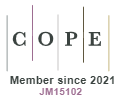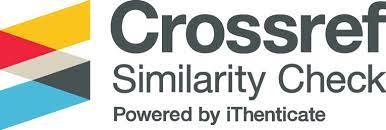Impact of JPY LIBOR Rate Changes on Regulations and Development of Alternative Benchmarks in Japan
DOI:
https://doi.org/10.18778/2391-6478.4.40.09Keywords:
benchmark interest rate, LIBOR, alternative rate, TONA, TIBOR, TORFAbstract
The purpose of the article/hypothesis: The considerations presented in this article aim to focus on the final choice of benchmarks in Japan, which operated the LIBOR rate expressed in Japanese yen. In turn, the main purpose of the article is to try to answer whether the newly selected alternative benchmarks in the Tokyo market meet the characteristics of an ideal rate.
Methodology: The paper reviews the literature, studies of regulators and index administrators, presenting the stages of reform, the selection of alternative reference rates and making a comparative analysis with the previously functioning LIBOR rate. Due to the subject of the analysis, basic statistical methods were used.
Results of the research: The course of benchmark reform in the Japanese market indicates that the reform has been successfully thought out and implemented, and the rates proposed as alternatives are well able to replace the JPY LIBOR rate. However, it should be noted that in this market it was decided that there are three alternatives to choose from covering both interbank rates and risk-free rates. These rates are referred to as: TONA, TIBOR and TORF. Under these circumstances, market participants must consider the optimal choice of comparative options depending on their financial products, the nature of the transactions they are dealing with and their own individual business needs. However, judging whether they are better than the LIBOR rate, the answer is positive because they are based on acts.
Downloads
References
Abrantes-Metz R., Kraten M., Metz, A., Seow G. (2012), Libor Manipulation? Journal of Banking & Finance, Vol. 36(1), http://dx.doi.org/10.1016/j.jbankfin.2011.06.014
Google Scholar
DOI: https://doi.org/10.1016/j.jbankfin.2011.06.014
Amamiya M. (2020), Interest Rate Benchmark Reform in Japan, Bank of Japan, https://www.boj.or.jp/en/announcements/press/koen_2020/ [Accessed: 15.10.2022].
Google Scholar
Amamiya M. (2021), LIBOR Transition in the Final Stage: There will be No Deus ex Machina, NIKKEI Financial Online Seminar, https://www.boj.or.jp/en/announcements/press/koen_2021/ko210608a.htm/ [Accessed: 21.11.2023]
Google Scholar
Bailey A. (2017), The future of LIBOR, https://www.fca.org.uk/news/speeches/the-future-of-libor [Accessed: 15.10.2022].
Google Scholar
Bank of Japan (2017a), Explanation of Statistics on Call Money Market, https://www.boj.or.jp/en/statistics/outline/exp [Accessed: 15.10.2022].
Google Scholar
Bank of Japan (2017b), Uncollateralized Overnight Call Rate Code of Conduct, https://www.boj.or.jp/en/statistics/ [Accessed: 15.10.2022].
Google Scholar
Burgess N. (2020), Libor Benchmark Reform: An Overview of Libor Changes and Its Impact on Yield Curves, Pricing and Risk, http://dx.doi.org/10.2139/ssrn.3479833
Google Scholar
DOI: https://doi.org/10.2139/ssrn.3479833
Chailloux A.B., Brousseau V., Durré A. (2009), Interbank Offered Rate: Effects of the Financial Crisis on the Information Content of the Fixing, Working paper series 2009-ECO-10, http://dx.doi.org/10.2139/ssrn.1635890
Google Scholar
DOI: https://doi.org/10.2139/ssrn.1635890
Chen J. (2021), LIBOR’s Poker, Journal of Financial Markets, Vol. 55. https://doi.org/10.1016/j.finmar.2020.100586
Google Scholar
DOI: https://doi.org/10.1016/j.finmar.2020.100586
Citi Treasury and Trade Solutions (2022), IBOR and Benchmark Reform, Frequently Asked Questions.
Google Scholar
Coulter B., Shapiro J., Zimmerman P. (2017), A mechanism for LIBOR, Review of Finance Vol. 22(2), https://doi.org/10.1093/rof/rfx045
Google Scholar
DOI: https://doi.org/10.1093/rof/rfx045
Cross-Industry Committee on Japanese Yen Interest Rate Benchmarks (2021), Roadmap to Prepare for the Discontinuation of Japanese Yen LIBOR
Google Scholar
Deloitee (2018), LIBOR Transition: Global Interest Rate Benchmark Reform, https://www2.deloitte.com/content/dam/Deloitte/ [Accessed: 15.10.2022].
Google Scholar
Duffie D., Stein J.C. (2015), Reforming LIBOR and Other Financial Market Benchmarks, Journal of Economic Perspective, Vol. 29 (2), http://dx.doi.org/10.1257/jep.29.2.191
Google Scholar
DOI: https://doi.org/10.1257/jep.29.2.191
FCA (2017a), The future of LIBOR, speech by Andrew Bailey at Bloomberg London, https://www.fca.org.uk/news/speeches/the-future-of-libor [Accessed: 15.10.2022].
Google Scholar
FCA (2017b), FCA statement on LIBOR panels, https://www.fca.org.uk/news/state-ments/fcastatement-libor-panels [Accessed: 15.10.2022].
Google Scholar
FCA (2021), FCA announcement on future cessation and loss of representativeness of the LIBOR benchmarks, https://www.fca.org.uk/publication [Accessed:15.10.2022].
Google Scholar
FSB, (2014), Reforming Major Interest Rate Benchmarks, https://www.fsb.org/2014/07/r [Accessed: 15.10.2022].
Google Scholar
Gensler G. (2012), Remarks of Chairman Gary Gensler, European Parliament, Economic and Monetary Affairs Committee, https://www.iosco.org/ [Accessed: 15.10.2022].
Google Scholar
Hansen G. (2010), Czy i czym zastąpimy WIBOR? https://www.obserwatorfinansowy.pl/tematyka/rynki-finansowe/ [Accessed:15.10.2022].
Google Scholar
HM Treasury (2012), The Wheatley Review of LIBOR: final report, https://assets.publishing.service.gov.uk/government/ [Accessed: 15.10.2022].
Google Scholar
Hou D., Skeie D. (2014), LIBOR: Origins, Economics, Crisis, Scandal and Reform, FRB of New York Staff Report No. 667, http://dx.doi.org/10.2139/ssrn.2423387
Google Scholar
DOI: https://doi.org/10.2139/ssrn.2423387
ICAEW, (2021), Interbank rates, https://www.icaew.com/library/subject-gateways/financial-markets/knowledge-guide-to-base-rates [Accessed: 15.10.2022].
Google Scholar
ICE Benchmark Administration (2022), LIBOR, Benchmark Statement, https://www.theice.com/publicdocs/LIBOR_Benchmark [Accessed: 15.10.2022].
Google Scholar
Japanese Bankers Association (2021), Libor transition, https://www.zenginkyo.or.jp/en/ [Accessed: 21.11.2023].
Google Scholar
JBA TIBOR Administration (2021), Current status and outlook of JBA TIBOR, https://www.jbatibor.or.jp/english/about/ [Accessed: 15.10.2022].
Google Scholar
Kirti D. (2022), What are reference rates for? Journal of Banking & Finance, Vol. 144, https://doi.org/10.1016/j.jbankfin.2022.106635
Google Scholar
DOI: https://doi.org/10.1016/j.jbankfin.2022.106635
Kruszka M. (2020), Ciągłość prawna wskaźników referencyjnych stopy procentowej, Ruch prawniczy, ekonomiczny i socjologiczny, https://doi.org/10.14746/rpeis.2020
Google Scholar
DOI: https://doi.org/10.14746/rpeis.2020.82.4.23
Kumar S. (2022), Risk rationalization of OTC derivatives in SORF (Secured Overnight Funding Rate) transition: evidence from linear interest rate derivatives, Academy of Accounting and Financial Studies Journal, Vol. 26(3).
Google Scholar
Kubacki D. (2019), Efektywność informacyjna rynku finansowego w wybranych krajach Unii Europejskiej, Wydawnictwo Uniwersytetu Łódzkiego.
Google Scholar
DOI: https://doi.org/10.18778/8142-548-3
Kubacki D. (2023), Reformy referencyjnych stóp procentowych na wybranych rynkach finansowych, Bezpieczny Bank, 91(2), https://doi.org/10.26354/bb.2.2.91.2023.
Google Scholar
Liszewska M. (2019), Rola indeksów rynku pieniężnego w wycenie instrumentów kredytowych w Polsce w świetle reformy wskaźników referencyjnych, Bezpieczny Bank, 2(75).
Google Scholar
Łogin D., Strucka M. (2015), Reforma wskaźników finansowych WIBOR, Konferencja EY – Reforma Regulacyjna Sektora Bankowego.
Google Scholar
Mielus P. (2016), Dylematy reformy indeksów rynku finansowego, Gospodarka Narodowa, 4 (284).
Google Scholar
DOI: https://doi.org/10.33119/GN/100780
McConnell P. (2013), Systemic operational risk: the LIBOR manipulation scandal, Journal of Operational Risk, Vol. 8 (3), https://ssrn.com/abstract=2328036
Google Scholar
DOI: https://doi.org/10.21314/JOP.2013.127
Mollenkamp C. (2008), LIBOR Fog: Bankers Cast Doubt On Key Rate Amid Crisis, The Wall Street Journal.
Google Scholar
Mollenkamp C., Whitehouse M. (2008), Study Casts Doubt on Key Rate, The Wall Street Journal.
Google Scholar
Monticini A., Thornton D. L. (2013), The effect of underreporting on LIBOR rates, Journal of Macroeconomics, Vol. 37, https://doi.org/10.1016/j.jmacro.2013.02.002
Google Scholar
DOI: https://doi.org/10.20955/wp.2013.008
Morgan J.P. (2019), Leaving Libor: A Landmark Transition, https://www.jpmorgan.com/content/dam/jpm/cib/complex/content/ [Accessed: 21.11.2023].
Google Scholar
National Bank of Canada (2022), Benchmark Reform Update – Tracking the transition. https://www.nbc.ca/content/dam/bnc/taux-analyses/ [Accessed: 15.10.2022].
Google Scholar
Pawłowicz L. (2010), Zastąpmy WIBOR realną stopą, https://www.obserwatorfinansowy.pl/tematyka/rynki-finansowe/ [Accessed: 15.10.2022].
Google Scholar
PwC (2021), LIBOR Transition, LIBOR vs Alternative Rates.
Google Scholar
Read O., Beißer J. (2021), The End of LIBOR: On Interest Rate Benchmark Reform, Alternative Risk-Free Rates, IBOR Fallbacks, LIBOR Cessation and Transition, WIFIN Working Paper 12/2021.
Google Scholar
Regulation (EU) 2016/1011 of the European Parliament and of the Council of 8 June 2016 on indices used as benchmarks in financial instruments and financial contracts or to measure the performance of investment funds and amending Directives 2008/48/EC and 2014/17/EU and Regulation (EU) No 596/2014 (OJ L 171, 29.6.2016).
Google Scholar
Ridley K., Jones H. (2012), Insight: A Greek Banker, the Shah and the Birth of Libor, Reuters, https://www.reuters.com/article/banking-libor [Accessed: 15.10.2022].
Google Scholar
Schrimpf A., Suschko V. (2019), Beyond LIBOR: a primer on the new reference rates, BIS.
Google Scholar
S&P Global Ratings (2021), Japanese Yen LIBOR Retirement: Alternative Benchmarks, https://www.spglobal.com/ratings/en/research/articles/210805-japanese-yen-libor-retirement-alternative-benchmarks-12006800 [Accessed:15.10.2022].
Google Scholar
SBI (2021), Libor Transistion Compendium, https://www.sbi.co.in/documents/16337/16538/241221-SBI-LIBOR_Transition [Accessed: 15.10.2022].
Google Scholar
Study Group on Risk-Free Reference Rates (2016), Report on the Identification of a Japanese Yen Risk-Free Rate, https://www.boj.or.jp [Accessed: 15.10.2022].
Google Scholar
Tabb R., Grundfest J. (2013), Alternatives to Libor, Capital Markets Law Journal, Vol. 8(3), http://dx.doi.org/10.2139/ssrn.2272462
Google Scholar
DOI: https://doi.org/10.1093/cmlj/kmt014
Takata H. (2021), Post LIBOR_2021.09.29, Totan Research Fellow, https://www.tokyotanshi.co.jp/market_data_tona/pdf/ENG_Post_LIBOR_2021.09.29_3rd.pdf, [Accessed: 21.11.2023].
Google Scholar
Tett G. (2008), Lenders Examine LIBOR Alternatives, Financial Times.
Google Scholar
Tuckman B. (2023), Short-Term Rate Benchmarks: The Post-LIBOR Regime, Forthcoming in Annual Review of Financial Economics, http://dx.doi.org/10.2139/ssrn.435.
Google Scholar
DOI: https://doi.org/10.2139/ssrn.4351722
Wrightson ICAP (2007), LIBOR: Twin Conundrums.
Google Scholar
(www1) List of Reference Banks, https://www.jbatibor.or.jp/english/about/reference.html [Accessed: 15.10.2022].
Google Scholar
(www2) Tokyo Term Risk Free Rate, https://moneyworld.jp/ [Accessed: 15.10.2022].
Google Scholar
(www3) Yen IRS Related, https://www.tokyotanshi.co.jp/ [Accessed: 15.10.2022].
Google Scholar
Downloads
Published
How to Cite
Issue
Section
License

This work is licensed under a Creative Commons Attribution-NonCommercial-NoDerivatives 4.0 International License.














